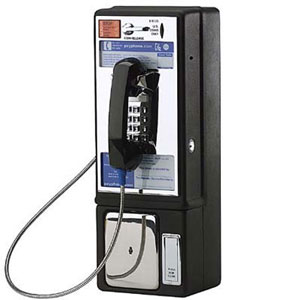LightSquared, Inc. filed for bankruptcy this afternoon after its plan to deliver high-speed wireless broadband nationwide was blocked by federal regulators over interference issues.
LightSquared was a pet project of billionaire hedge fund manager Phil Falcone, who earned his money pitching George Foreman grills and betting against sub-prime mortgages. Falcone invested billions in the satellite Internet venture, despite knowing the wireless technology had run into controversy with nearby satellite spectrum users who claimed it interfered with GPS reception.
Starting in 2010, Falcone convinced the FCC to approve his purchase of SkyTerra Communications, on the condition he construct a nationwide wireless broadband platform that could serve up to 260 million Americans. His hedge fund, Harbinger Capital Partners, spent $3 billion to gain control of 74 percent of the fledgling LightSquared project, despite Falcone’s knowledge the technology would potentially interfere with adjacent spectrum users. But Falcone dismissed those concerns, believing the interference problem was actually the fault of GPS technology that encroached on his spectrum or receivers that were not properly constructed to reject adjacent channel interference.
Falcone’s steadfast belief in LightSquared, and the enormous financial backing he gave it, flew in the face of network engineers who reviewed the technology startup.
DirecTV was one company interested in the potential of LightSquared’s wireless satellite broadband back in 2004, but quickly backed away when even tentative tests flashed red lights of caution for DirecTV executives.
“A young engineer we had went and tested it and said, ‘It conflicts with GPS, it will never work.’ So we backed away immediately,” CEO Michael White told Business Week.
Falcone assumed any problems could be smoothed over with the federal government, White added.
With sufficient lobbying money and inside D.C. influence, he might have even overcome the alliance of GPS users that formed to fight the venture. But in the public debate that followed, the GPS community eventually proved their case and the FCC put the project’s approval on hold. Now some parties involved in the LightSquared debacle are wondering if things might have gone better had the company been more sensitive to those GPS users and had found a way to overcome the interference problems.
Ultimately, the FCC delivered the death blow issuing an eventual revocation of the company’s license to operate its broadband system as presently designed.
Most of the group’s working partners have fled the LightSquared project, Harbinger has seen the biggest drop in assets in industry history — losing $23 billion from direct losses and client withdrawals, and billionaire Falcone is even accused of allegedly stiffing the contractor working on his Long Island home at least $1.2 million, according to a lien filed in Suffolk County.
[flv width=”640″ height=”380″]http://www.phillipdampier.com/video/Bloomberg The Fall of Phil Falcone 4-16-12.flv[/flv]
Fabio Savoldelli, a finance professor at Columbia University, talks about Harbinger Capital Partners’ Phil Falcone and his investment in wireless broadband startup LightSquared Inc. It has been rough sailing for Falcone ever since he turned the project into a major priority for himself and his investors. Savoldelli shares how it all went wrong with Bloomberg News. (8 minutes)


 Subscribe
Subscribe











